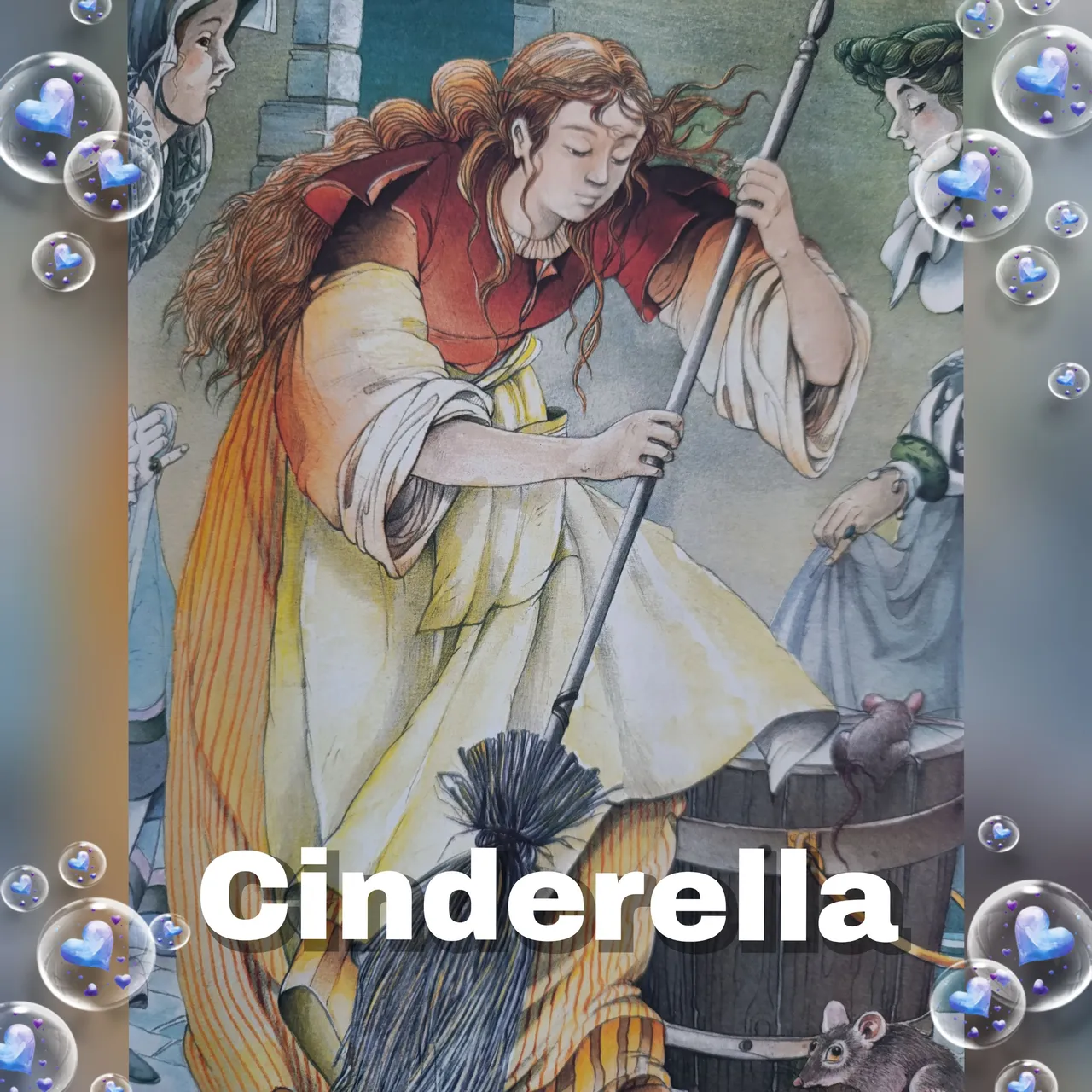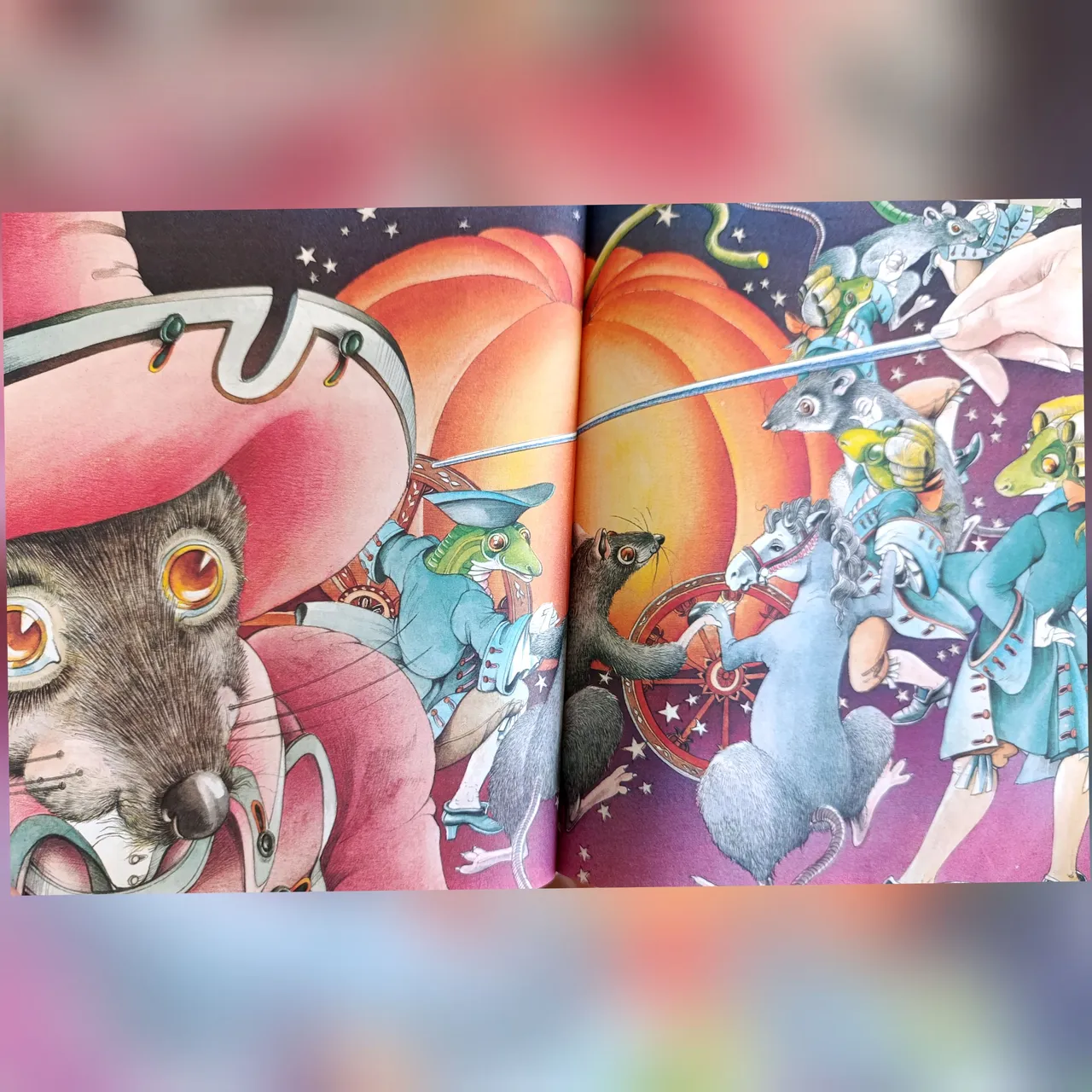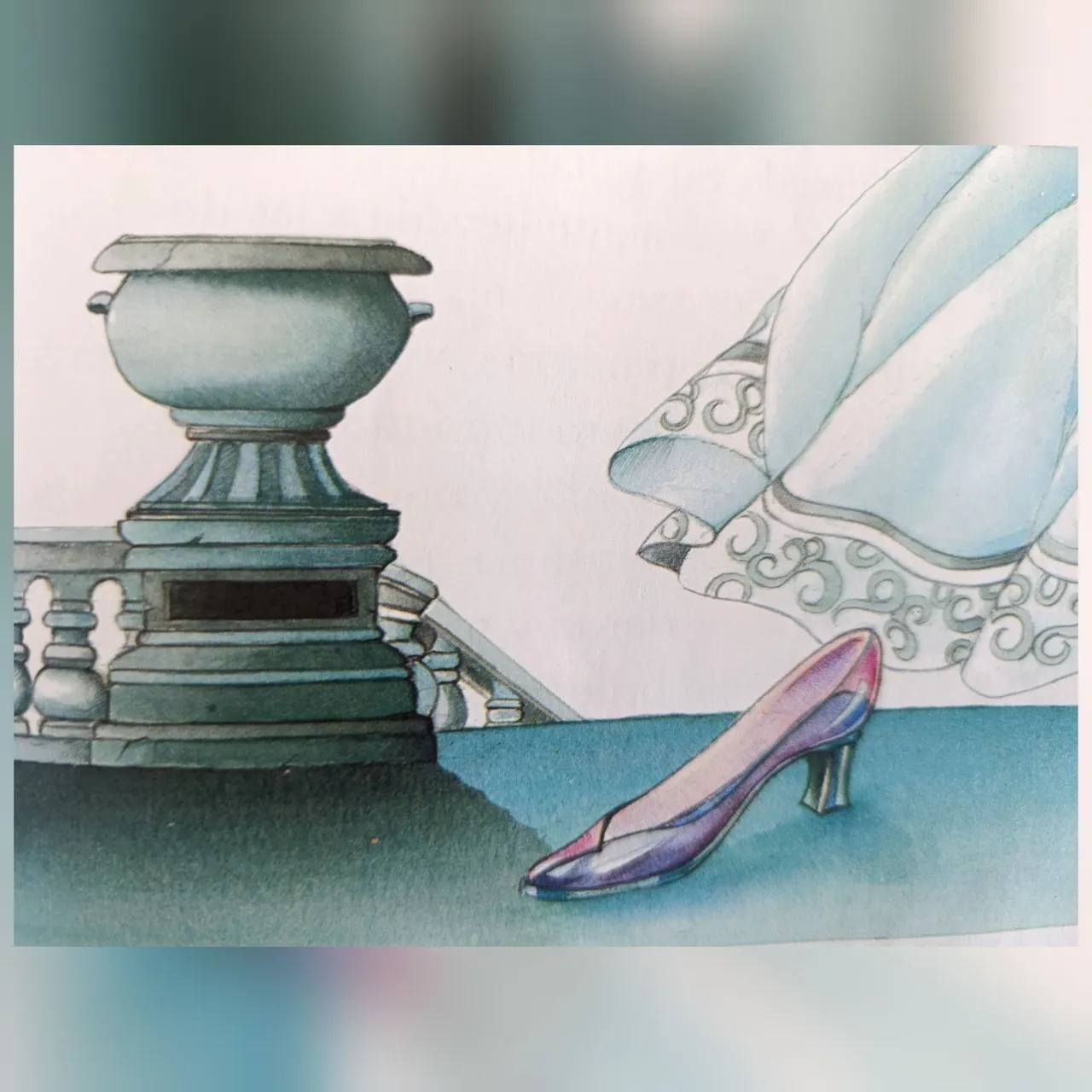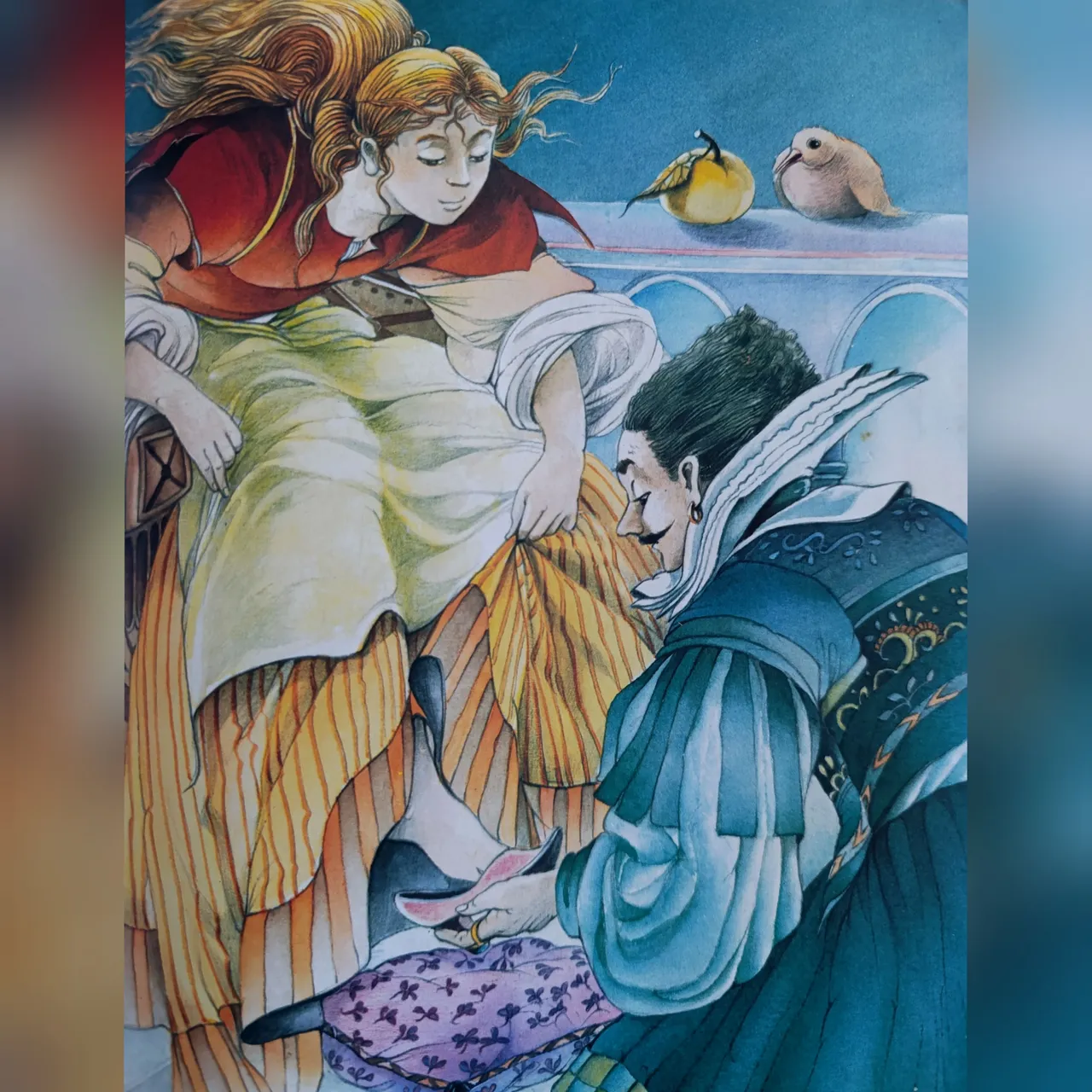A few days ago I shared with you the story of Vassilissa the Beautiful, a tale from the Russian oral tradition, whose initial approach reminded me of the classic children's story Cinderella, so I went to look for the Brothers Grimm's version for a deeper analysis.
In both, the antagonist is a stepmother, who is accompanied by her two daughters. All three are presented as cruel, evil, arrogant, envious and selfish characters. This characterization would later become a stereotype not only in literature but also in cinema, television and other media.

The father or male figure remains in the distant background throughout, so both narratives are approached from feminist perspectives. Cinderella not only did the housework but also dressed in rags and slept in the attic. The father lived in a bubble, closing his eyes so as not to observe such a panorama. She suffered in silence because communication and trust with her father had been broken. A message is then sent to the reader, being present does not mean showing interest in what is going on inside the home.

In Cinderella there are several fantastic elements, the most fascinating of which is the glass slipper, which only fits Cinderella. The fairy godmother also appears with her magic wand, who makes it possible for the girl to attend the ball, giving her a dress of gold, silver and diamonds, as well as a colorful carriage. If we analyze a little more, we can see that Cinderella only used appearances to deceive everyone and pretend she was a princess.

To what extent lies are valid to achieve what we want. When we read the story for the first time, with that innocent look, this scene could be wonderful, but later we realize that Cinderella was materialistic and, for that reason, she longed to get out of poverty by marrying a prince, a behavioral model that was later adopted in modern societies.
In this story there is redemption, the stepsisters ask Cinderella for forgiveness and she grants it, which shows kindness. For her good heart she receives the great reward, she marries the prince and they live happily ever after. Some reflections can be drawn from this denouement. The absence of resentment of the protagonist for what happened in the past sends a positive message, although children tend to forgive and continue playing, unlike young people and adults who usually find it difficult to get up from an emotional setback.

The concept of love is also handled from a very light point of view in this type of children's stories; ideal relationships are established from one day to the next, a situation that parents should explain to children in time, because in the real world the process of emotional union until marriage is complex and is not simply an instant "crush".

Undoubtedly, Cinderella became the backbone for creating love stories, especially scripts for soap operas, where the protagonist suffers like Cinderella many heartaches throughout countless episodes until she finally manages to be happy with her male counterpart.
Versión en Español
Hace unos días compartí con ustedes la historia de Vassilissa la hermosa, un cuento de la tradición oral rusa, cuyo planteamiento inicial me hizo recordar al clásico relato infantil Cenicienta, así que fui a buscar la versión de los Hermanos Grimm para realizar un análisis más profundo.
En ambos, la antagonista es una madrastra, quien está acompañada por sus dos hijas. Las tres se presentan como personajes crueles, malvadas, soberbias, envidiosas y egoístas. Esta caracterización pasaría a convertirse después en un estereotipo no solamente en la literatura sino también en el cine, la televisión y otros medios.

La figura paterna o masculina permanece en un distante segundo plano en todo momento, así que ambas narraciones se abordan desde perspectivas feministas. Cenicienta no solo se encargaba de las labores del hogar sino que, además, vestía con harapos y dormía en el ático. El padre vivía en una burbuja, cerrando los ojos para no observar tal panorama. Ella sufría en silencio porque se había roto la comunicación y la confianza con su padre. Se envía entonces un mensaje al lector, el estar presente no significa mostrar interés en lo que ocurre dentro del hogar.

En Cenicienta hay varios elementos fantasticos, el más fascinante de ellos es la zapatilla de cristal, la cual únicamente le calza a Cenicienta. También aparece el hada madrina con su varita mágica, quien hace posible que la chica asista al baile, dándole un vestido de oro, plata y diamantes, además de un vistoso carruaje. Si analizamos un poco más, podemos ver que Cenicienta solo se sirvió de las apariencias para engañar a todos y fingir que era una princesa.

Hasta qué punto las mentiras son válidas para lograr lo que queremos. Cuando leemos el relato por primera vez, con esa mirada inocente, esta escena podría resultar maravillosa, pero más adelante se cae en cuenta de que Cenicienta era materialista y, por tal razón, anhelaba salir de la pobreza casándose con un príncipe, modelo conductual que fue adoptado posteriormente en las sociedades modernas.
En este relato hay redención, las hermanastras piden perdón a Cenicienta y ella se lo concede, eso demuestra bondad. Por su buen corazón recibe la gran recompensa, se casa con el príncipe y viven felices para siempre. De este desenlace se extraen algunas reflexiones. La ausencia de resentimiento de la protagonista por lo ocurrido en el pasado envía un mensaje positivo, aunque a decir verdad los niños suelen ser proclives a perdonar y seguir jugando, a diferencia de los jóvenes y adultos a quienes por lo regular les cuesta levantarse de un revés emocional.

También el concepto de amor se maneja desde una óptica muy ligera en este tipo de cuentos infantiles, de un día para otro se establecen relaciones ideales, situación que los padres deben explicar a tiempo a los niños porque en el plano real el proceso de unión afectiva hasta llegar al matrimonio resulta complejo y no simplemente es un "flechazo" instantáneo.

Sin duda, Cenicienta se convirtió en la columna vertebral para crear historias de amor, sobre todo guiones para las telenovelas, donde la protagonista padece cual Cenicienta muchos sinsabores a lo largo de incontables episodios hasta que por fin logra ser feliz junto a su contraparte masculino.
✓Photos from my personal gallery, edited with Fotocollage.
✓Text translated with DeepL.
👠👠👠👠👠👠👠👠👠👠
✓Fotos de mi galería personal, editadas con Fotocollage.
✓Texto traducido con DeepL.